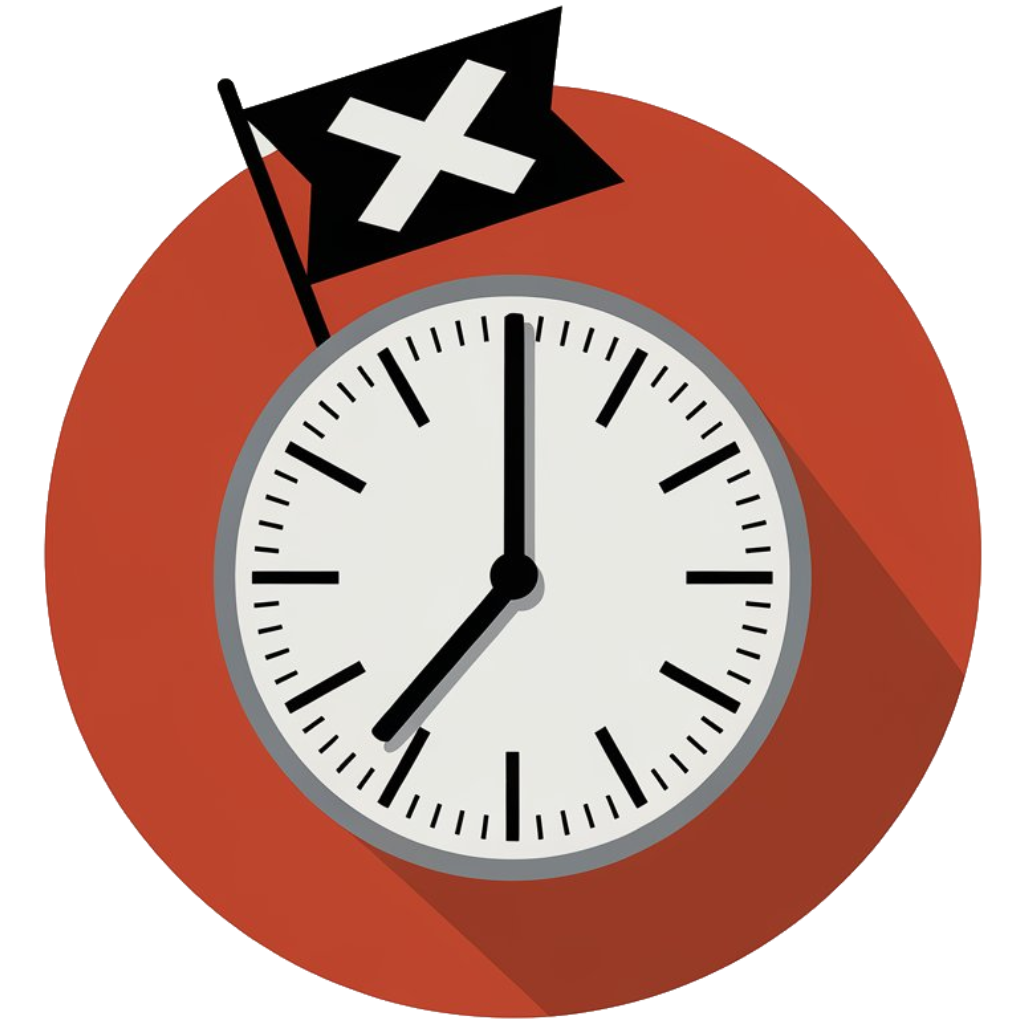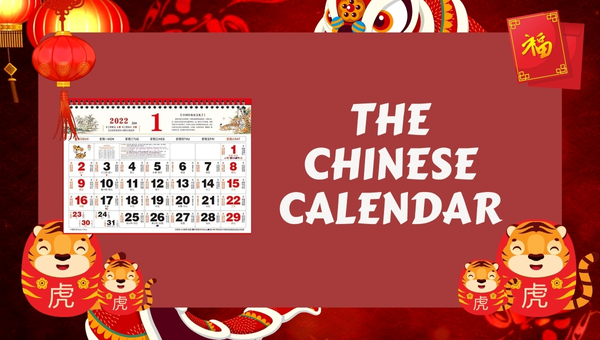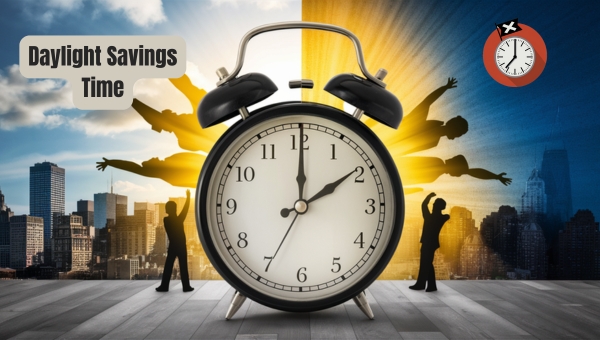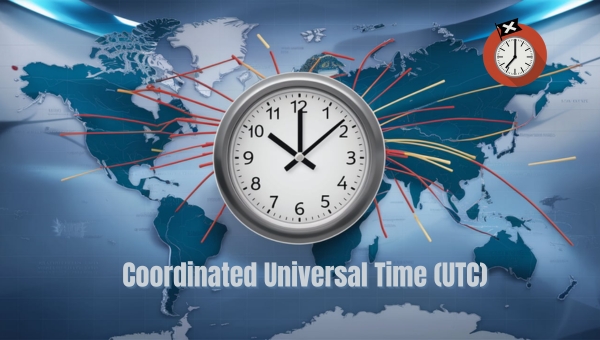Lunar Calendar | A Guide to Moon Phases & Festivals
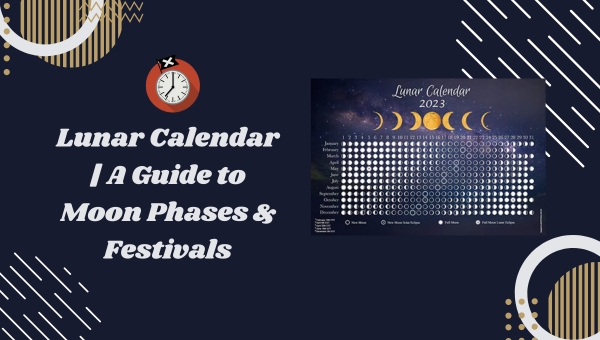
The Lunar Calendar is a fascinating topic that has intrigued people for centuries. In this deep dive, we’ll explore its history, structure, and significance across various cultures. You’ll discover the differences between lunar and solar calendars and learn about key festivals like the Lunar New Year and the Mid-Autumn Festival.
Additionally, we’ll cover modern applications and the influence of the lunar calendar on other systems. By the end, you’ll have a comprehensive understanding of this timekeeping system and its cultural importance. So, let’s embark on this journey to uncover the secrets of the Lunar Calendar!
A synopsis of the lunar calendar
The Lunar Calendar, a fascinating system of timekeeping, is rooted in the phases of the moon. Unlike the solar calendar, which is based on the Earth’s orbit around the Sun, the lunar calendar is governed by the moon’s cycles.
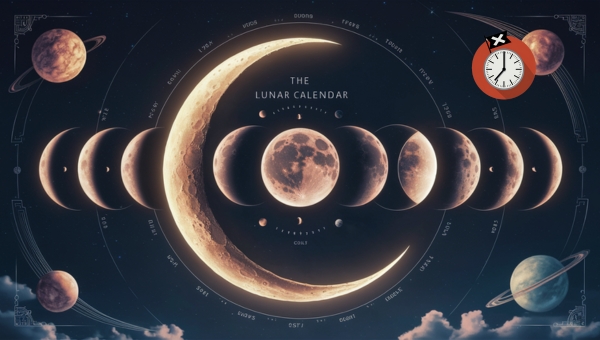
This calendar system has been pivotal in various cultures, guiding agricultural practices, religious observances, and social events. To understand the lunar calendar, let’s delve into its rich history and the key differences from the more commonly used solar calendar.
Here’s a table representing the structure of a lunar calendar: This table includes a sample lunar year with months, corresponding lunar dates, and a brief description of each month. Note that this is a general representation, and actual lunar months may vary slightly depending on the year.
| Month Number | Lunar Month Name (Chinese) | Lunar Month Name (English) | Lunar Dates (Approx.) | Description |
|---|---|---|---|---|
| 1 | 正月 (Zhēngyuè) | First Month | January – February | Marks the start of the lunar year, includes Chinese New Year. |
| 2 | 二月 (Èr yuè) | Second Month | February – March | Often coincides with the Lantern Festival. |
| 3 | 三月 (Sān yuè) | Third Month | March – April | Spring season, relevant for agricultural activities. |
| 4 | 四月 (Sì yuè) | Fourth Month | April – May | Includes Qingming Festival. |
| 5 | 五月 (Wǔ yuè) | Fifth Month | May – June | Early summer month. |
| 6 | 六月 (Liù yuè) | Sixth Month | June – July | Known for its heat and summer festivals. |
| 7 | 七月 (Qī yuè) | Seventh Month | July – August | Often associated with Ghost Festival. |
| 8 | 八月 (Bā yuè) | Eighth Month | August – September | Mid-Autumn Festival falls in this month. |
| 9 | 九月 (Jiǔ yuè) | Ninth Month | September – October | Harvest season. |
| 10 | 十月 (Shí yuè) | Tenth Month | October – November | Late autumn period. |
| 11 | 十一月 (Shíyī yuè) | Eleventh Month | November – December | Pre-winter month. |
| 12 | 十二月 (Shíèr yuè) | Twelfth Month | December – January | Includes winter solstice and prepares for the new lunar year. |
This table provides a structured overview of the lunar months, their approximate Gregorian dates, and brief descriptions of each month’s significance.
History and Significance
The origins of the lunar calendar date back to ancient civilizations, where early humans observed the moon’s phases to track time. Various cultures, such as the Chinese, Islamic, and Hebrew civilizations, developed their versions of the lunar calendar, each with unique features but sharing the common basis of lunar cycles.
- Ancient Civilizations: The Chinese lunar calendar, for instance, is believed to have been established during the Shang Dynasty (around 1600-1046 BCE). It was used to determine agricultural cycles and important cultural festivals.
- Islamic Calendar: The Islamic lunar calendar, known as the Hijri calendar, started in 622 CE with the migration of the Prophet Muhammad from Mecca to Medina. It is still in use today for determining Islamic holidays like Ramadan and Hajj.
- Hebrew Calendar: The Hebrew calendar combines both lunar and solar elements. It is used to set dates for Jewish holidays and rituals, and its origins trace back to biblical times.
These examples highlight the lunar calendar’s importance in shaping cultural and religious practices across different societies.
Differences from Solar Calendars
The primary difference between lunar and solar calendars lies in their basis of timekeeping. While solar calendars, like the widely-used Gregorian calendar, are based on the Earth’s orbit around the Sun, the lunar calendar is based on the moon’s phases.
- Lunar Cycles: A lunar month is approximately 29.5 days, which is the time it takes for the moon to complete one full cycle of phases (new moon to new moon). As a result, a lunar year, consisting of 12 lunar months, is about 354 days.
- Solar Cycles: In contrast, the solar calendar divides the year according to the Earth’s 365.25-day orbit around the Sun. This difference means that lunar years are shorter than solar years by about 11 days.
- Leap Months: To align the lunar calendar with the solar year, some lunar calendars incorporate leap months. For example, the Chinese calendar adds a leap month approximately every three years.
These distinctions result in unique methods of timekeeping and cultural observances that are specific to each calendar system. Understanding these differences is crucial for appreciating the diverse ways in which human societies have tracked and celebrated the passage of time.
Structure of the Lunar Calendar
The structure of the Lunar Calendar is both fascinating and intricate, offering a unique way to measure time based on the moon’s cycles. Let’s break down its key components to better understand how it works. We’ll delve into the concept of lunar months and the role of leap months in aligning the lunar year with the solar year.
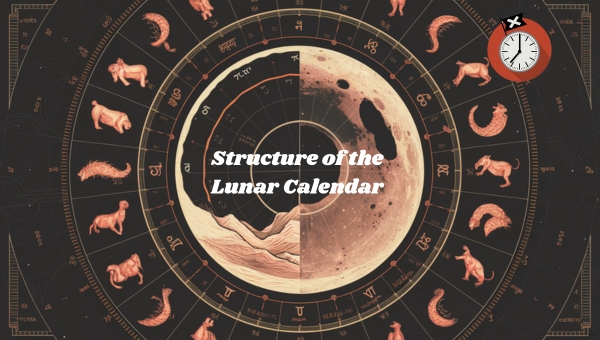
Lunar Months
Lunar months are determined by the phases of the moon, from one new moon to the next. Here are some key points to consider:
- Duration: A lunar month typically lasts about 29.5 days, which is slightly shorter than the average solar month.
- Phases: The month starts with the new moon and progresses through the first quarter, full moon, and last quarter phases.
- Variability: Because of the moon’s elliptical orbit, the exact length of a lunar month can vary slightly.
Leap Months
To keep the lunar calendar in sync with the solar year, leap months are occasionally added. Here’s how this process works:
- Purpose: Leap months ensure that the lunar year, which is about 354 days, remains aligned with the 365-day solar year.
- Frequency: A leap month is typically added every two to three years.
- Naming: The leap month is usually named after the regular month that precedes it, creating a “double month” scenario.
Understanding these elements of the lunar calendar helps us appreciate its complexity and the ingenuity behind its design.
Key Festivals and Observances
The Lunar Calendar is rich with festivals and observances that hold deep cultural significance. These events bring communities together and mark important moments in the lunar cycle. Let’s delve into some of the key festivals and observances celebrated around the world.
Lunar New Year
Lunar New Year is one of the most significant celebrations for many cultures, particularly in East Asia. It marks the beginning of the new year based on the lunar calendar.
- Timing: The Lunar New Year typically falls between late January and mid-February, depending on the lunar cycle. The date changes each year but always aligns with the first new moon of the lunar calendar.
- Cultural Significance: The celebration is deeply rooted in traditions and customs. In China, it’s known as the Spring Festival. Families clean their homes to sweep away ill-fortune and make way for incoming luck. Red decorations are ubiquitous, symbolizing joy and prosperity.
- Festivities: The celebration lasts for 15 days, with various activities such as family reunions, feasts, lion dances, and fireworks. The final day is marked by the Lantern Festival, where people release lanterns into the sky or set them afloat on water.
- Global Celebrations: Beyond China, the Lunar New Year is celebrated in countries like Vietnam (Tet), South Korea (Seollal), and Japan (Shogatsu). Each culture brings its unique customs and traditions to the celebration.
Mid-Autumn Festival
The Mid-Autumn Festival is another major event in the lunar calendar, celebrated with family gatherings and traditional foods.
- Timing: It takes place on the 15th day of the eighth lunar month, usually in September or October. This timing coincides with the full moon, which is considered the brightest and fullest of the year.
- Cultural Importance: The festival is a time for family reunions and thanksgiving. It is also a harvest festival, celebrating the end of the autumn harvest. In China, it’s known as the Moon Festival.
- Traditional Foods: Mooncakes are the iconic food of the Mid-Autumn Festival. These round pastries are filled with various ingredients like lotus seed paste, red bean paste, or salted egg yolk. They symbolize family unity and completeness.
- Festivities: Apart from feasting, families often light lanterns and admire the full moon. In some cultures, dragon and lion dances are performed to bring good fortune.
Other Lunar Observances
The lunar calendar also dictates the timing of various other cultural festivals and observances around the world.
- Chuseok: This Korean festival, similar to Thanksgiving, is held on the 15th day of the eighth lunar month. Families gather to pay respects to their ancestors, enjoy traditional foods like songpyeon (rice cakes), and participate in folk games.
- Diwali: Known as the Festival of Lights, Diwali is celebrated in India and among Hindu communities worldwide. Although primarily based on the solar calendar, its timing can be influenced by lunar phases. It signifies the victory of light over darkness and good over evil.
- Ramadan: In the Islamic calendar, which is purely lunar, Ramadan is the holy month of fasting. It begins with the sighting of the new moon and lasts for 29 or 30 days, depending on the lunar cycle. It culminates in the celebration of Eid al-Fitr.
These festivals reflect the diverse ways in which the lunar calendar shapes cultural practices and traditions worldwide. Each event is a testament to the calendar’s enduring significance in our lives.
Using the Lunar Calendar Today
The Lunar Calendar is still very relevant in our modern world. From determining significant cultural events to aiding in astrological predictions, its applications are diverse. Let’s dive into some practical aspects of how this ancient system is used today.
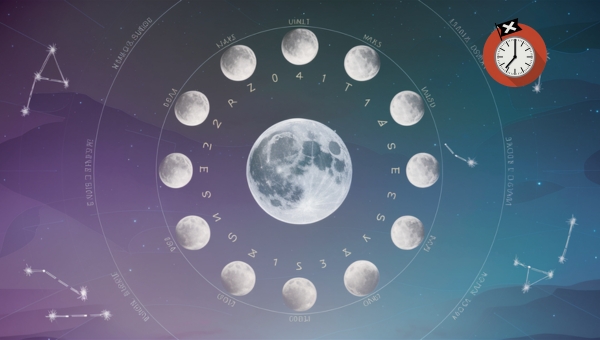
Conversion to Gregorian Dates
Converting Lunar Calendar dates to Gregorian dates can seem complex, but there are effective methods and tools to simplify this process. Here are some key approaches:
- Online Conversion Tools: Websites and apps offer straightforward conversion from lunar dates to Gregorian dates. These tools require you to input the lunar year, month, and day, and they provide the corresponding Gregorian date.
- Printed Conversion Tables: Traditional conversion tables list lunar dates alongside their Gregorian equivalents. These are particularly useful for those who prefer offline resources.
- Specialized Software: Certain software programs are designed for more complex conversions, often used by astrologers and researchers to ensure precise results.
Modern Applications
The Lunar Calendar is not just a relic of the past; it finds numerous applications in contemporary settings:
- Astrology: Lunar cycles play a crucial role in astrology. Many horoscopes and astrological predictions rely on the phases of the moon to provide insights.
- Religious Practices: Many religions use the Lunar Calendar to determine the dates of important festivals and rituals. For example, the Islamic calendar is purely lunar, and holidays like Ramadan are based on lunar cycles.
- Cultural Celebrations: Events like the Lunar New Year and Mid-Autumn Festival are celebrated according to the Lunar Calendar, showcasing its ongoing cultural significance.
- Agricultural Planning: In some regions, farmers still use lunar phases to guide planting and harvesting activities, believing that certain phases of the moon can affect crop yields.
By understanding these applications, we can appreciate how the Lunar Calendar remains a vital tool in various aspects of life even today.
Influence on Other Calendars
When we consider the Lunar Calendar, its impact on other calendar systems is profound and widespread. This ancient timekeeping method has left an indelible mark on various cultures and their respective calendars. Let’s delve into how the lunar calendar has influenced other systems around the world and examine its historical significance.
Impact on Various Cultures
The Lunar Calendar has profoundly shaped numerous cultures. For instance, the Islamic calendar, also known as the Hijri calendar, is purely lunar and consists of 12 lunar months.
This calendar is essential for determining the dates of Islamic holidays and rituals, such as Ramadan and Hajj.
- In East Asia, the traditional lunisolar calendars, such as the Chinese, Korean, and Vietnamese calendars, combine both lunar and solar elements. These calendars are crucial for cultural festivities and agricultural activities.
- The Hebrew calendar, used in Jewish religious observances, is another example of a lunisolar system. It incorporates lunar months with periodic leap months to align with the solar year.
- In South Asia, the Hindu calendar also integrates lunar and solar cycles, guiding religious festivals and agricultural seasons.
These examples illustrate the significant influence of the lunar calendar on various cultural practices and timekeeping systems worldwide.
Historical Legacy
The historical legacy of the Lunar Calendar is vast, impacting global timekeeping and cultural practices for millennia. Ancient civilizations, such as the Babylonians and Egyptians, relied on lunar cycles to manage their agricultural and religious activities.
- The Babylonian calendar, one of the earliest known lunar calendars, laid the groundwork for subsequent timekeeping systems. It utilized a 12-month lunar year, with occasional leap months to maintain alignment with the solar year.
- In ancient Egypt, the lunar calendar was used alongside the solar calendar to track agricultural cycles and religious events, influencing the development of the later Coptic calendar.
- The Greek and Roman calendars initially followed lunar months before transitioning to a predominantly solar system. This transition reflects the evolving understanding of astronomy and the need for more precise timekeeping.
The Lunar Calendar’s historical impact extends beyond mere timekeeping. It has deeply influenced cultural rituals, agricultural practices, and religious observances, leaving a lasting legacy that continues to shape our world today.
FAQs
How does the lunar calendar differ from the solar calendar?
The lunar calendar is based on the cycles of the moon, with months typically lasting 29 or 30 days. In contrast, the solar calendar is based on the Earth’s orbit around the sun, comprising 12 months of varying lengths to total 365 or 366 days.
What are some major festivals based on the lunar calendar?
Major festivals include the Lunar New Year, celebrated widely in East Asia, and the Mid-Autumn Festival, known for its mooncakes and lanterns. Other notable observances are Chuseok in Korea and Diwali in India.
How can I convert lunar calendar dates to Gregorian dates?
Conversion tools and software are available online to assist with this task. These tools often require inputting the lunar date to provide the corresponding Gregorian date easily.
Conclusion
The Lunar Calendar is a fascinating and complex system deeply rooted in history and cultural significance. Its unique structure, based on lunar cycles, sets it apart from the solar calendar, influencing various festivals and observances worldwide. The modern use of the Lunar Calendar continues to play a vital role in religious and cultural practices, offering a glimpse into the rich traditions of different societies.
Understanding its influence and applications can provide valuable insights into our collective heritage. If you enjoyed this deep dive into the Lunar Calendar, be sure to explore more insightful articles on our site!
